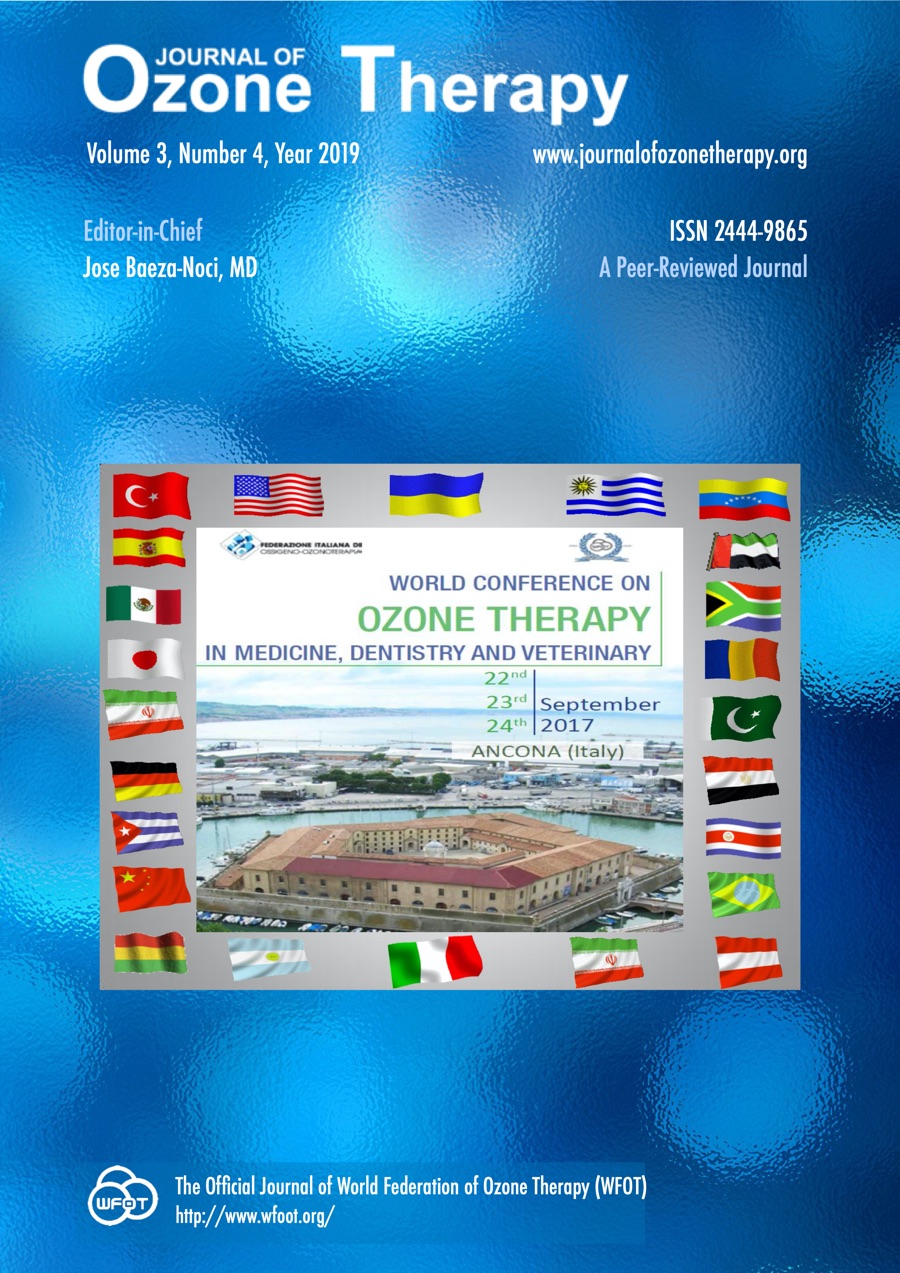Degenerative disc disease (DDD) in 2017. Possible mechanism of action of ozone [abstract]
DOI:
https://doi.org/10.7203/jo3t.3.4.2019.15418Keywords:
disc degeneration, ozone therapy Abstract
Abstract
PURPOSE: Show light on the biological mechanism of ozone in DDD.
The increase in life expectancy in the population brings to the increase of diseases associated with aging: cancer, heart disease, diabetes and low back pain. DDD and osteoarthritis are the most common causes of chronic joint-related disability and disabling pain in adults. Aging of the organism is the result of accumulation of molecular and cellular alterations over time, leading to a physiological and functional decrease of tissues.
ANALYSIS AND DISCUSSION: In the Intervertebral discs (IVDs), aging can be schematized in 3 phases: accumulation of damaged bio-molecules, aberrant cellular response to the lesion and loss of structure and biological function. This perspective focuses on considering that the aging mechanisms are senescence, inflammation and oxidative damage.
The IVDs acquire fissures and neo-vascularisation, this causes that the resident cells that are accustomed to the low voltage of oxygen, are exposed to a greater tension of oxygen and therefore to the oxidative stress.
During aging, IVD cells change from the anabolic to catabolic phenotype. There is increased necrosis, apoptosis, and cell senescence.
The NF-kB signal is central in the inflammatory response, stress and injury. There is a chronic activation of NF-kb correlated with oxidative stress and degeneration.
Symptomatic discs have high levels of pro-inflammatory cytokines that are considered targets of NF-kB.
CONCLUSION: For many years attempts have been made to inhibit the action of NF-kb and other inflammatory targets to mitigate DDD without favourable results. However, ozone is the solution to this problem because it interferes precisely at the level of NF-kB avoiding its chronic activation.
That is why, in DDD there are sustainable improvements on patients, despite the fact that the MRI images show no significant changes.
 Downloads
Downloads
Downloads
Published
How to Cite
-
Abstract650
-
PDF287
Issue
Section
License
Journal of Ozone Therapy applies the Creative Commons Attribution-NonCommercial 4.0 International License (CC BY NC 4.0) license to works we publish.
Under this license, authors retain ownership of the copyright for their content, but allow anyone to download, reuse, reprint, modify, distribute and/or copy the content as long as the original authors and source are cited. No permission is required from the authors or the publishers.
You may not use the material for commercial purposes.
Appropriate attribution can be provided by simply citing the original article, provide a link to the license, and indicate if changes were made.
You may do so in any reasonable manner, but not in any way that suggests the licensor endorses you or your use.




